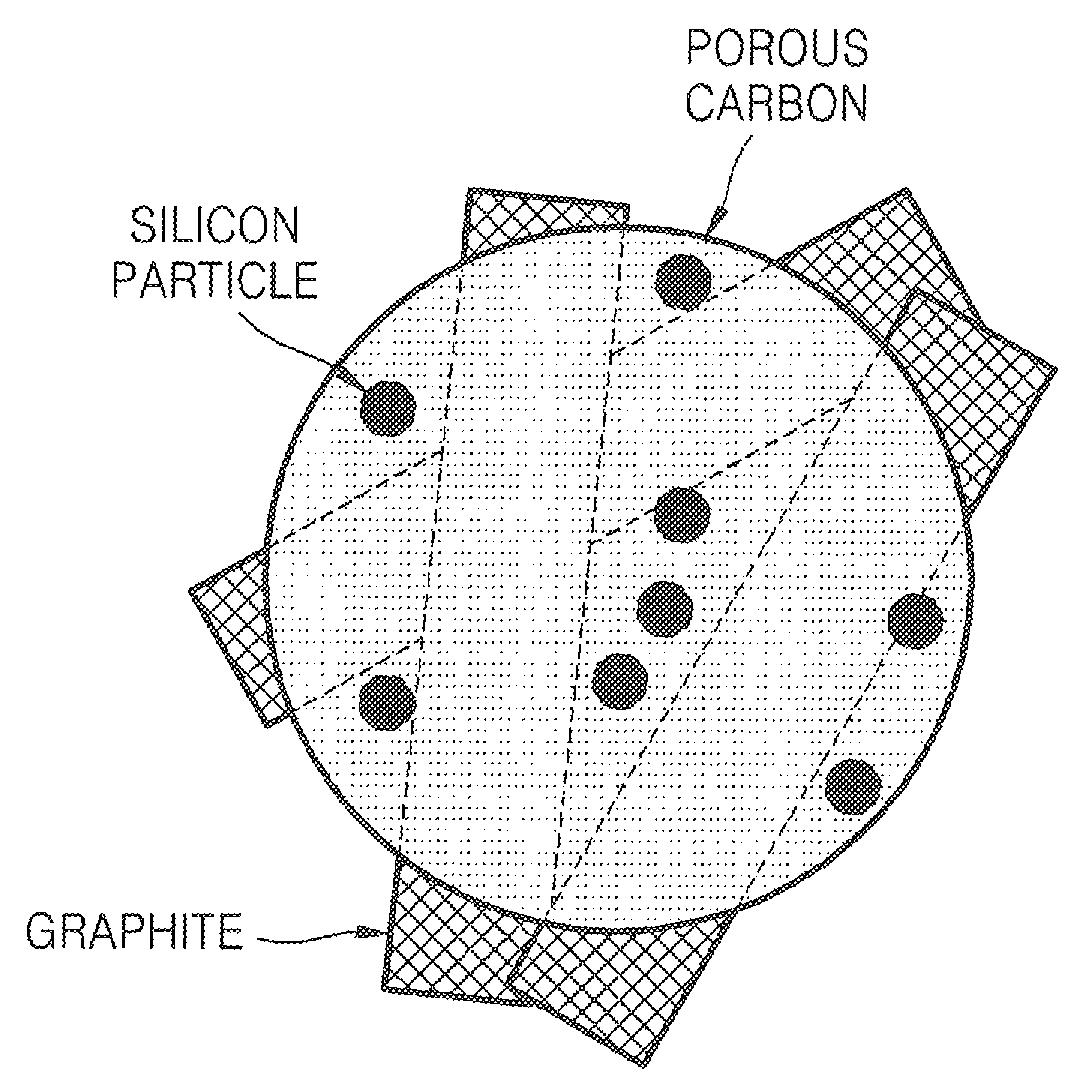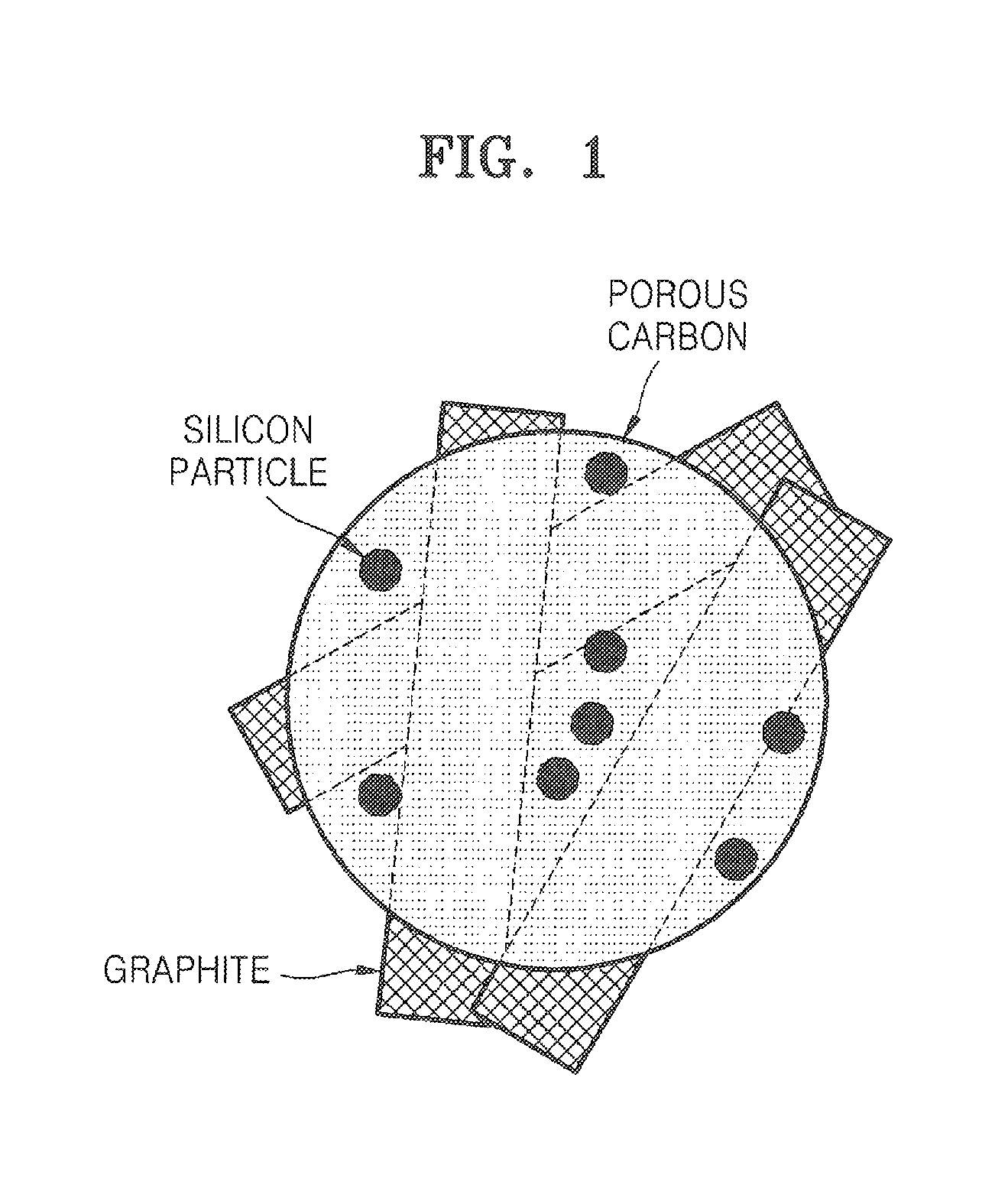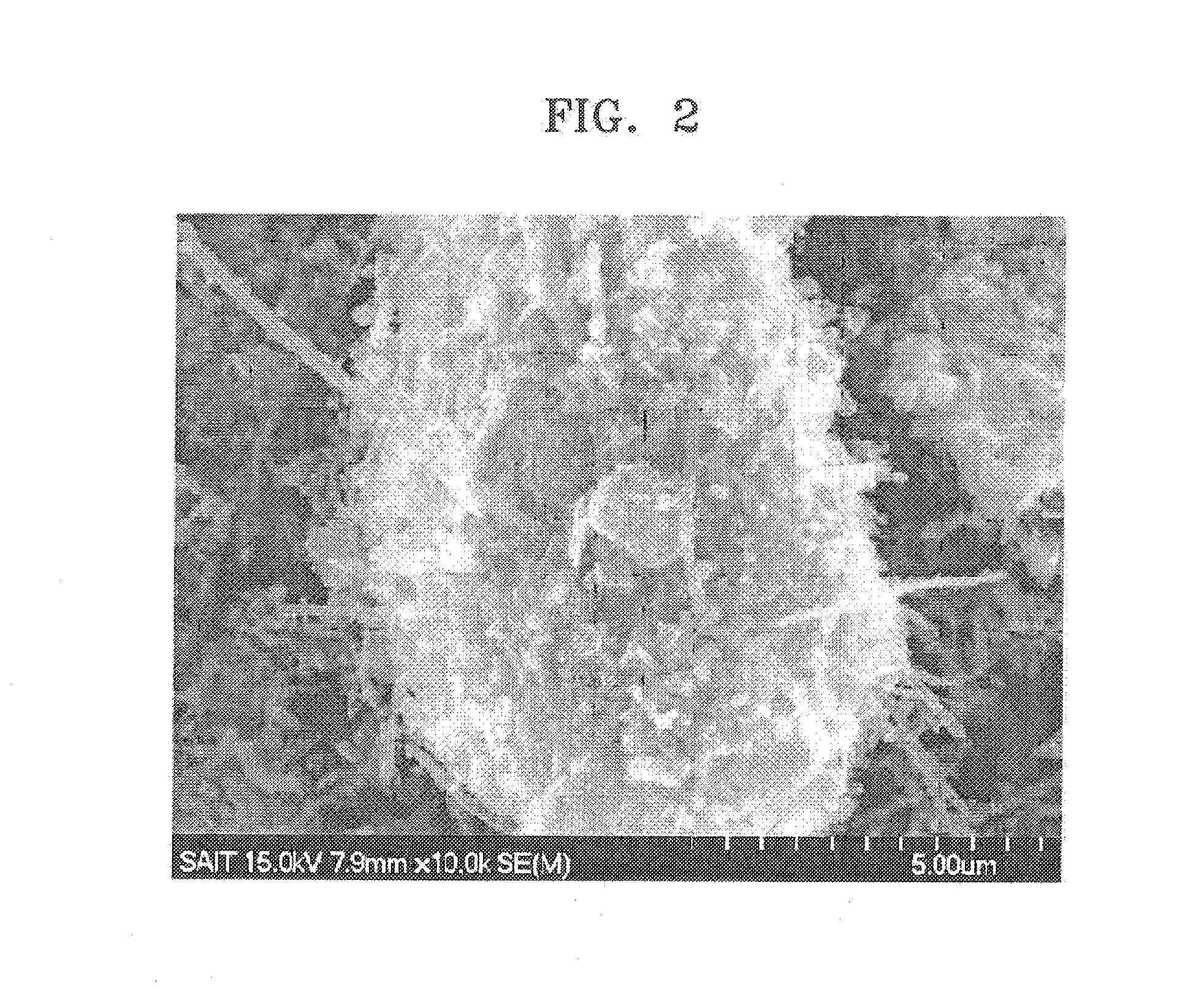Porous anode active material, method of preparing the same, and anode and lithium battery employing the same
a technology of active materials and porous anodes, which is applied in the direction of non-metal conductors, cell components, conductors, etc., can solve the problems of reducing the charge/discharge efficiency or allowing short circuit between the anode and the cathode, the risk of explosion, and the inability to widely use lithium anodes, etc., to achieve excellent charge/discharge characteristics and efficient removal of stress
- Summary
- Abstract
- Description
- Claims
- Application Information
AI Technical Summary
Benefits of technology
Problems solved by technology
Method used
Image
Examples
example 1
[0089]2.0 g of silicon powders having an average diameter of 3 μm was added to 5 g of methanol and an ultrasonic wave was irradiated to the mixture in an ultrasonic bath for 10 minutes. Then, while stirring the solution, aminopropyltrimethoxysilane (APS) was slowly added dropwise thereto, and then further stirred for 5 hours. An excess amount of methanol was added to the stirred solution and centrifuged and then a supernatant was removed, which was repeated three times to remove unreacted APS from the solution. The solution was dried at 80° C. to obtain fine silicon particles having their surfaces capped with the alkyl amine.
[0090]5 g of crystalline carbon fibers (VGCFs), 100 mL of 60% nitric acid, and 50 mL of deionized water were placed into a container made of high density polyethylene (HDPE) and milled with zirconia balls for 7 days. The resultant product was centrifuged and dried.
[0091]0.61 g of phenol, 0.13 g of a NaOH solution (20% by weight), and 1.05 g of a formaldehyde sol...
example 2
[0093]A porous anode active material was prepared in the same manner as in Example 1, except that silicon powders having an average diameter of 70 nm were used instead of the silicon powders having an average diameter of 3 μm and that graphite particles (SFG-6, manufactured by TimCal) were used instead of the crystalline carbon fibers (VGCFs).
example 3
[0094]A porous anode active material was prepared in the same manner as in Example 1, except that SiO powders having an average diameter of 5 μm were used instead of the silicon powders having an average diameter of 3 μm and that graphite particles (SFG-6, manufactured by TimCal) were used instead of the crystalline carbon fibers (VGCFs).
PUM
| Property | Measurement | Unit |
|---|---|---|
| pore size | aaaaa | aaaaa |
| pore size | aaaaa | aaaaa |
| pore size | aaaaa | aaaaa |
Abstract
Description
Claims
Application Information
 Login to View More
Login to View More - R&D
- Intellectual Property
- Life Sciences
- Materials
- Tech Scout
- Unparalleled Data Quality
- Higher Quality Content
- 60% Fewer Hallucinations
Browse by: Latest US Patents, China's latest patents, Technical Efficacy Thesaurus, Application Domain, Technology Topic, Popular Technical Reports.
© 2025 PatSnap. All rights reserved.Legal|Privacy policy|Modern Slavery Act Transparency Statement|Sitemap|About US| Contact US: help@patsnap.com



